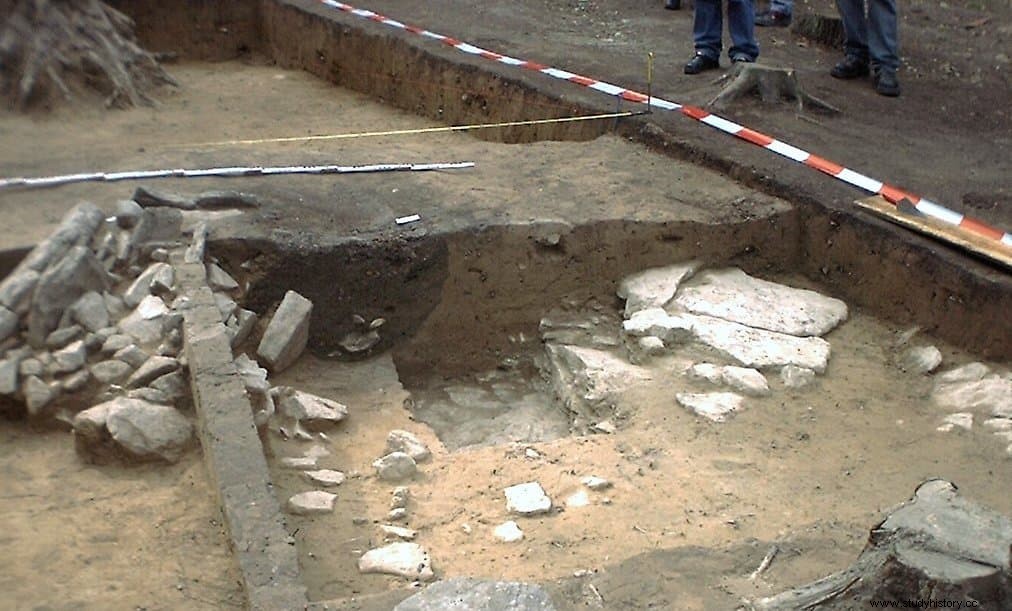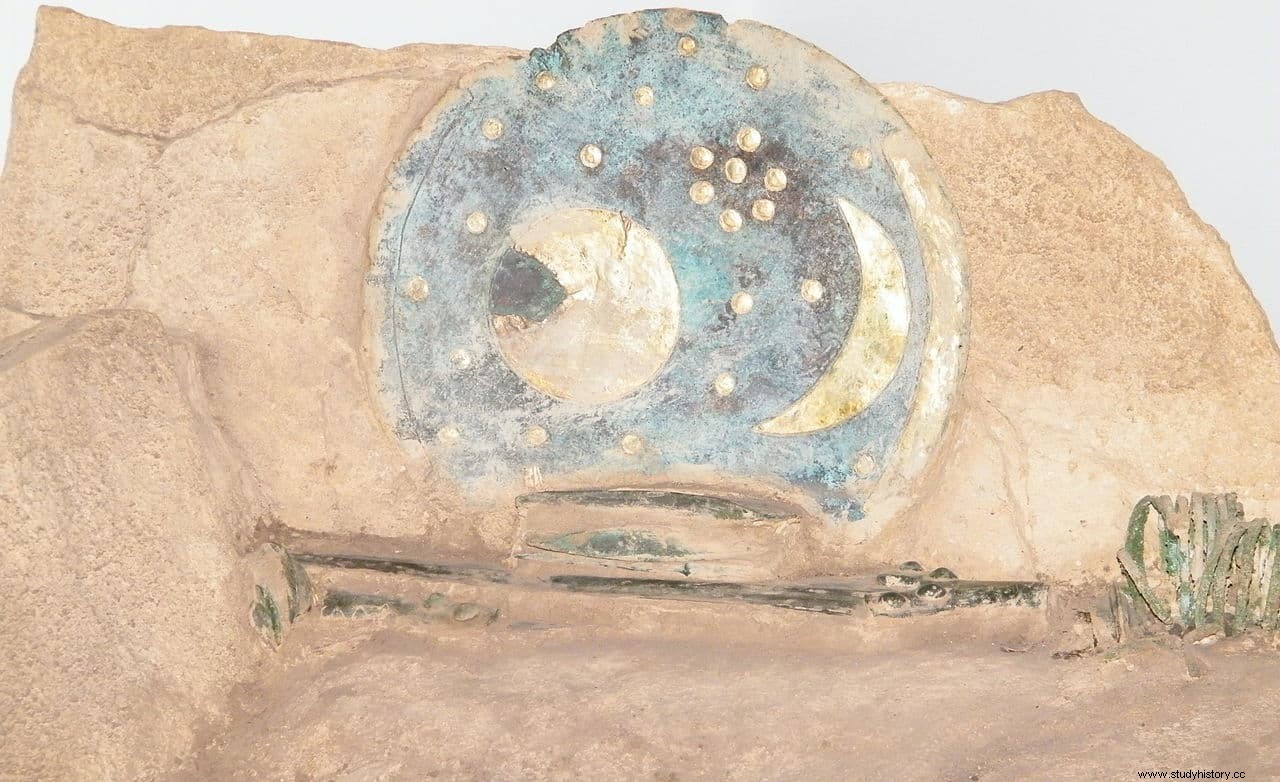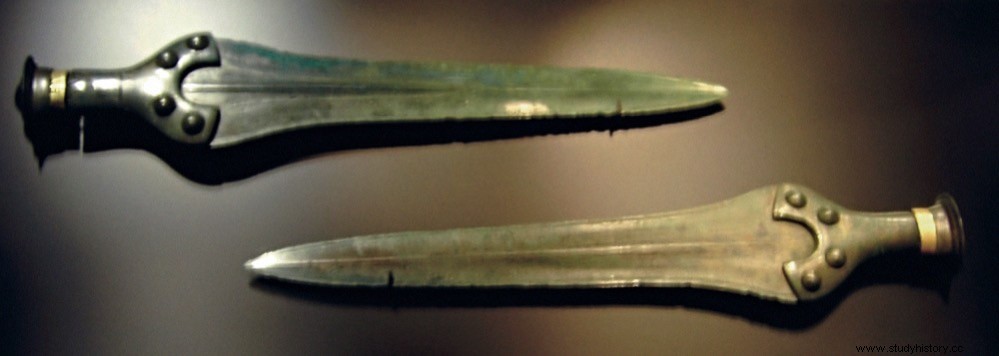The Nebra sky disk is a unique prehistoric bronze and gold object that some interpret as an astronomical tool, but whose actual function is not entirely clear.
It was discovered by two treasure hunters in 1999, on a hill (Mt. Mittelberg) in the Ziegelroda Forest near the town of Nebra (Saxony-Anhalt state in Germany). Along with it appeared other objects such as swords, axes, chisels and bracelets.
Its discoverers, Henry Westphal and Mario Renner, sold all the objects the next day to an antiquities dealer in Cologne. The treasure changed hands several times over the next two years, each time increasing in value. Until in 2001 its existence came to light.
The German archaeologist Harald Meller managed to get hold of the disc thanks to a police operation against the black market, which allowed to follow the trail of Westphal and Renner. Once both were arrested, they took the archaeologists to the discovery site, a pit surrounded by a Bronze Age enclosure.

Around 800 burial mounds from the Bronze Age had already been found in the area around Mount Mittelberg. However, on this occasion the site was not a burial but a deposit in which the objects had been stored inside a cist (a metal container with a lid).
Around the cist, a circular wall of about 160 meters in diameter was found, built in the Iron Age, a millennium after the disc was made. The researchers concluded that it was a religious cult site, probably chosen for its possible astronomical relationships. And it is that the enclosure is oriented in such a way that the sun sets every solstice behind the Brocken, the highest peak of the Harz mountains, located about 80 kilometers away and visible from the mound.
The analyzes revealed that both the disc and the weapons and other objects found corresponded to a period between 1600 and 1560 BC, belonging to the Unetice culture. It spread between the Rhine and Dnieper rivers during the Early Bronze Age, from about 1800 B.C.
It was also possible to identify that the copper present in the bronze alloy of the disc came from Bischofshofen, in Austria, while the gold came from the Carnon River in Cornwall and the Carpathian Mountains.
The Nebra disk is about 30 centimeters in diameter and weighs 2.2 kilograms. Several pieces of gold are embedded in it:two larger ones that appear to be the Moon and the Sun, other smaller ones that could be stars, and three in the shape of an arc on the edges of the disk. These could be used to calculate the angle between the solstices, the lower one being a kind of solar boat . The first interpretations also saw the possible representation of the Pleiades, in the cluster that is in the upper part between the two larger figures. For this reason, many believe that it is an astronomical instrument.

For some time it was thought to be a forgery, because there is no comparable object from the same period. But today researchers agree on its authenticity, and in fact it would be one of the first concrete representations of the sky, if not the oldest. The Memory of the World program of UNESCO considers it one of the most important archaeological finds of the 20th century .
Its identification as an astronomical instrument is based on the fact that the two lateral arches could indicate the angle (82º) between the positions of sunrise and sunset on the summer and winter solstices at the Mittelberg latitude (51º North). In that case the circle would be a representation of the Sun. And the Nebra disk would be the first known portable instrument that would allow such calculations.
However, it does not seem so clear that it is an astronomical instrument, perhaps just an artistic representation of the sky. This is what Dr. César González García, from the Department of Theoretical Physics of the Autonomous University of Madrid, thinks, for example. The doubts lie in several issues, always according to Dr. González:
In the first place, what is represented next to the Moon could not be the Sun but the full Moon. Because in case it was the Sun, the horns of the Moon should point the other way. Regarding the stars, they seem to be placed randomly, including that the asterism of the Pleiades is elongated (and that is how the Babylonians already represented it), and not round as in the disk.

But the main reason why you rule out its astronomical utility is:
That's a 1.8 degree difference in accuracy for a Bronze Age artifact.
The disk is part of the permanent collection of the Saxony-Anhalt State Museum for Prehistory (Landesmuseum für Vorgeschichte) in Halle, although there is also a reproduction in the visitor center built near the find site.
